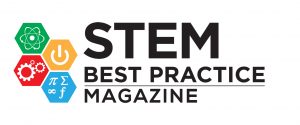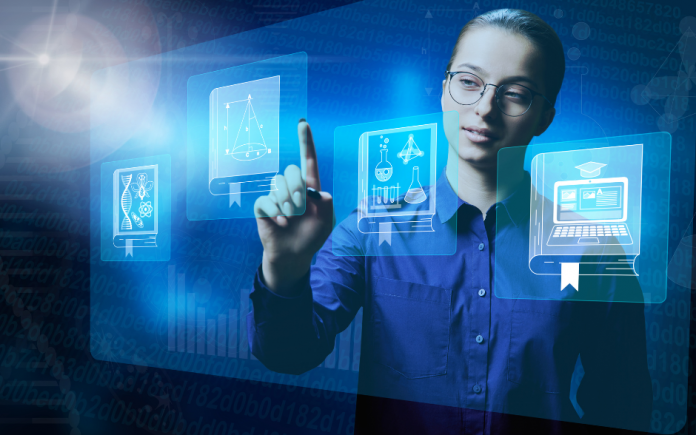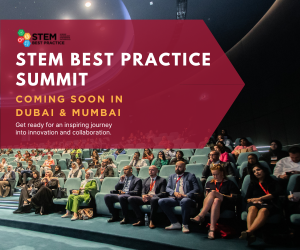“Technology will not replace great teachers but technology in the hands of great teachers will be transforming education.”
The current era is known for evolution of education and pedagogy. Integration of technology is reshaping traditional teaching methods. Virtual Reality (VR) and Artificial Intelligence (AI) are among the most promising advancements. Both technologies are making significant impacts into STEM (Science, Technology, Engineering, and Mathematics) education, offering innovative ways to engage students and enhance learning outcomes. This article explores the benefits, challenges, and future potential of VR and AI in STEM teaching.
Understanding VR and AI in Education
Virtual Reality:
Virtual Reality is a computer generated digital environments that simulate real-world scenarios, allowing users to interact within a 3D space in real time. In STEM education, VR can replicate complex systems and phenomena that are often difficult to visualize or experience in a traditional classroom setting. For example, students can explore the human body, conduct chemical experiments, or engage in architectural design within a virtual space. Exploring about space is one of the most interesting area of science and technology studies. Imagine a student experiencing the space, stars and galaxies while sitting in their classrooms. This is possible due to advancements of VR.
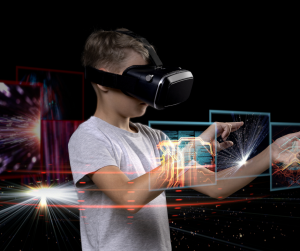
AI, on the other hand, refers to computer systems that can perform tasks typically requiring human intelligence, such as understanding natural language, recognizing patterns, and making decisions. In the educational context, AI can provide personalized learning experiences, assess student performance, and offer instant feedback, thereby enhancing the learning process.
Enhancing learner’s engagement and comprehension
Immersive Learning Experiences
One of the primary advantages of VR in STEM education is its ability to create immersive learning experiences. For instance, medical students can participate in virtual surgeries, allowing them to practice skills in a risk-free environment. Biology classes can be equipped with real time experience of understanding the structure and function of various organs of living organisms or exploring them in their virtual natural environment. Similarly, engineering students can visualize complex structures in 3D, gaining a better understanding of spatial relationships and design principles. Burj Khalifa , one of the tallest man made structure located in Dubai , now students can virtually walk inside it to see its architectural details, thanks to VR equipment and software. Chemical reactions can be witnessed without laboratory set up and hazards.
Research indicates that immersive experiences can lead to higher retention rates. A study published in the journal Computers & Education found that students using VR to learn physics concepts could reflect better retention and understanding of concept when compared to their peers who learned through traditional methods.
Personalized Learning experiences
AI enhances STEM education by enabling personalized learning experiences. Learning platforms created by AI can assess a student’s strengths and weaknesses, and can customize its content to meet their individual needs. For instance , an AI system could identify a student struggling with algebra or trigonometry and provide targeted exercises to help them improve.
Furthermore, AI-driven analytics can track student progress over time, allowing educators to keep a track of their learning and develop strategies to cater individual learning needs.
Bridging the Gap between Theory and Practice
Simulating Real-World Applications
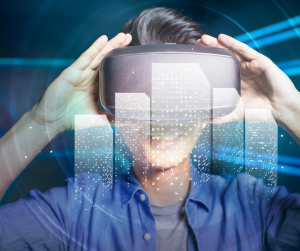
Both VR and AI provide students with opportunities to apply theoretical knowledge in practical scenarios. In engineering, for instance, students can use VR to simulate the construction of bridges or buildings, evaluating the effects of different materials and designs. This hands-on experience fosters critical thinking and problem-solving skills that are essential in the STEM fields. AI can also assist in simulating real-world applications. Machine learning algorithms can model complex systems, enabling students to predict outcomes and analyze data. For instance, biology students can study ecosystems by simulating interactions between species, observing how changes in one part of the system can impact the whole.
Collaborative Learning
The combination of VR and AI encourages collaborative learning environments. Students can work together in virtual spaces, collaborating on projects and sharing ideas in real time, regardless of their physical locations. This not only enhances teamwork skills but also prepares students for the collaborative nature of STEM careers.
Platforms like Engage and vSpatial offer tools for virtual collaboration, allowing students to brainstorm, prototype, and present their work in immersive settings. The ability to visualize and manipulate 3D models collectively fosters a deeper understanding of complex concepts and promotes creativity.
Addressing Challenges and Limitations
Cost and Accessibility
Despite the numerous benefits, integrating VR and AI into STEM education presents challenges. One major barrier is the cost associated with the technology. High-quality VR headsets and AI-driven platforms can be expensive, limiting access for many schools, especially in underfunded districts.
Additionally, not all students may have access to the necessary hardware or high-speed internet at home, exacerbating the digital divide. To ensure equitable access, educational institutions must seek funding, partnerships, and grants to provide resources to all students.
Training Educators
Training educators to use VR and AI is another challenge and needs comprehensive training which further requires investment of time and money. Educators must be equipped with the skills to effectively use VR and AI tools in their teaching. Professional development programs should focus on integrating technology into the curriculum, ensuring teachers feel confident and competent in leveraging these tools.
Moreover, users must remain mindful of potential pitfalls, such as over-dependence on technology. While VR and AI can enhance learning, they should complement, not replace, traditional teaching methods. Because traditional teaching method has a strong human connect which ensures a strong bond between learner and mentor. This relationship helps to overcome many hurdles in learning process.
The Future of STEM Education
Evolving Pedagogies
As VR and AI technologies continue to evolve, so too will pedagogical approaches in STEM education. The future may see a shift towards more experiential and project-based learning models, where students engage in hands-on projects that integrate VR simulations and AI analytics.
Additionally, interdisciplinary learning will likely become more prevalent. For instance, students studying environmental science might use AI to analyze data collected from VR simulations of climate change scenarios, fostering a deeper understanding of the subject.
Expanding Opportunities
The integration of VR and AI in STEM education also opens doors for diverse learning experiences. Students from various backgrounds can engage with STEM subjects in ways that resonate with them, increasing interest and participation in these fields. Initiatives that provide exposure to VR and AI can inspire underrepresented groups to pursue careers in STEM, ultimately contributing to a more diverse workforce.
The integration of Virtual Reality and Artificial Intelligence in STEM education holds tremendous potential to revolutionize teaching and learning. By creating immersive, personalized, and collaborative learning environments, these technologies can engage students in ways that traditional methods often cannot. While challenges such as cost and accessibility remain, the continued development and adoption of VR and AI can pave the way for a more effective and inclusive STEM education landscape. As educators embrace these innovations, the future of STEM learning promises to be more dynamic, engaging, and relevant than ever before.
About the Author
 Soma Goswami, is a dedicated STEM educator with eight years of experience in high school education. Passionate about fostering a love for science and technology, Ms. Soma emphasizes experimentation, innovation, and creative learning in her classrooms. She is not only an educator but also an impressive teacher trainer who is actively involved in teacher training. She believes that hands-on experiences and imaginative problem-solving are essential for engaging students and preparing them for future challenges. Through her dynamic teaching methods and writings Ms. Soma inspires her students to think critically and explore the limitless possibilities within the STEM .
Soma Goswami, is a dedicated STEM educator with eight years of experience in high school education. Passionate about fostering a love for science and technology, Ms. Soma emphasizes experimentation, innovation, and creative learning in her classrooms. She is not only an educator but also an impressive teacher trainer who is actively involved in teacher training. She believes that hands-on experiences and imaginative problem-solving are essential for engaging students and preparing them for future challenges. Through her dynamic teaching methods and writings Ms. Soma inspires her students to think critically and explore the limitless possibilities within the STEM .

